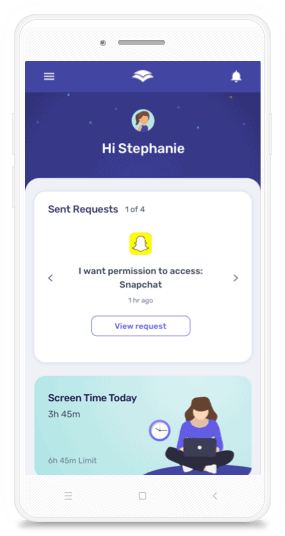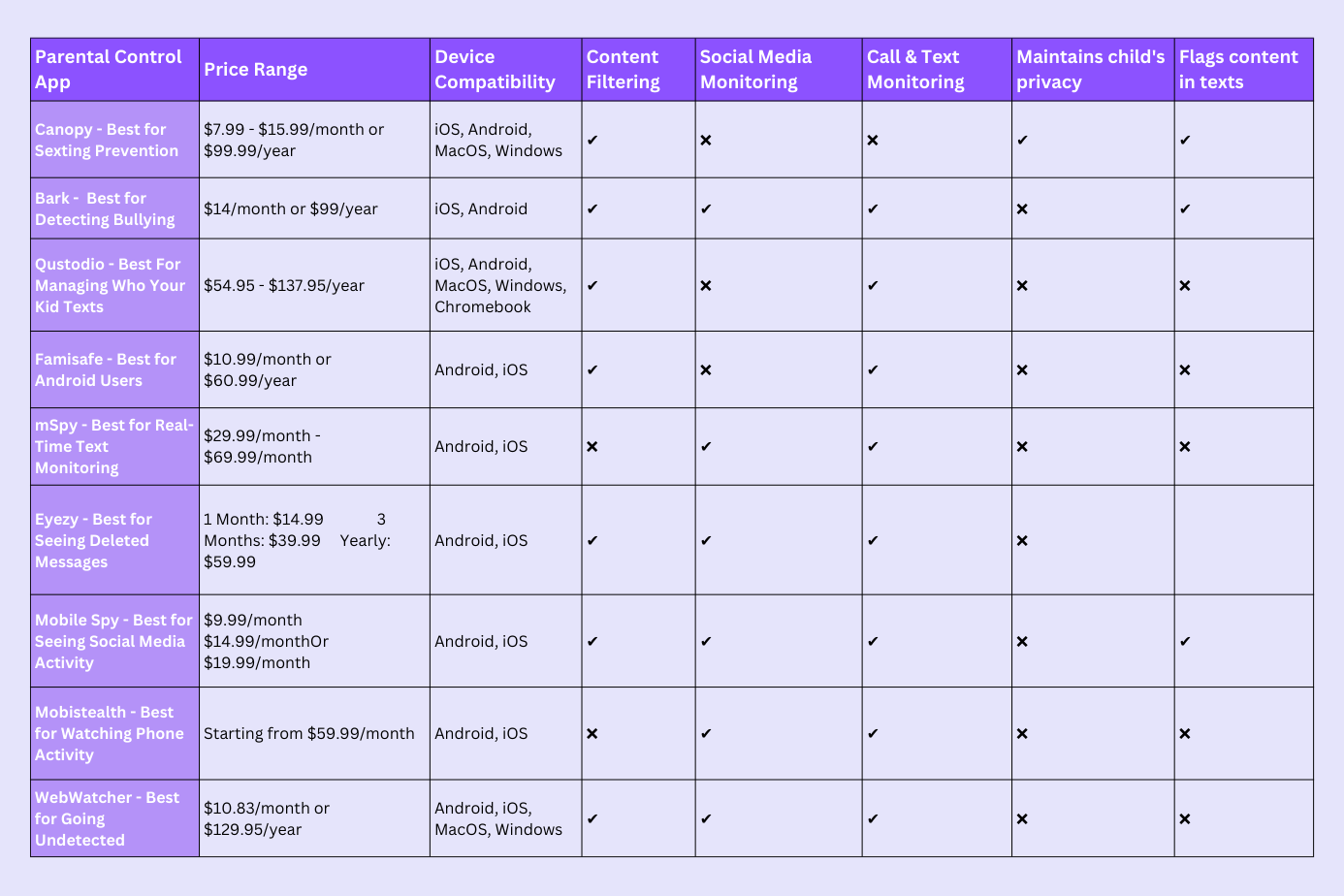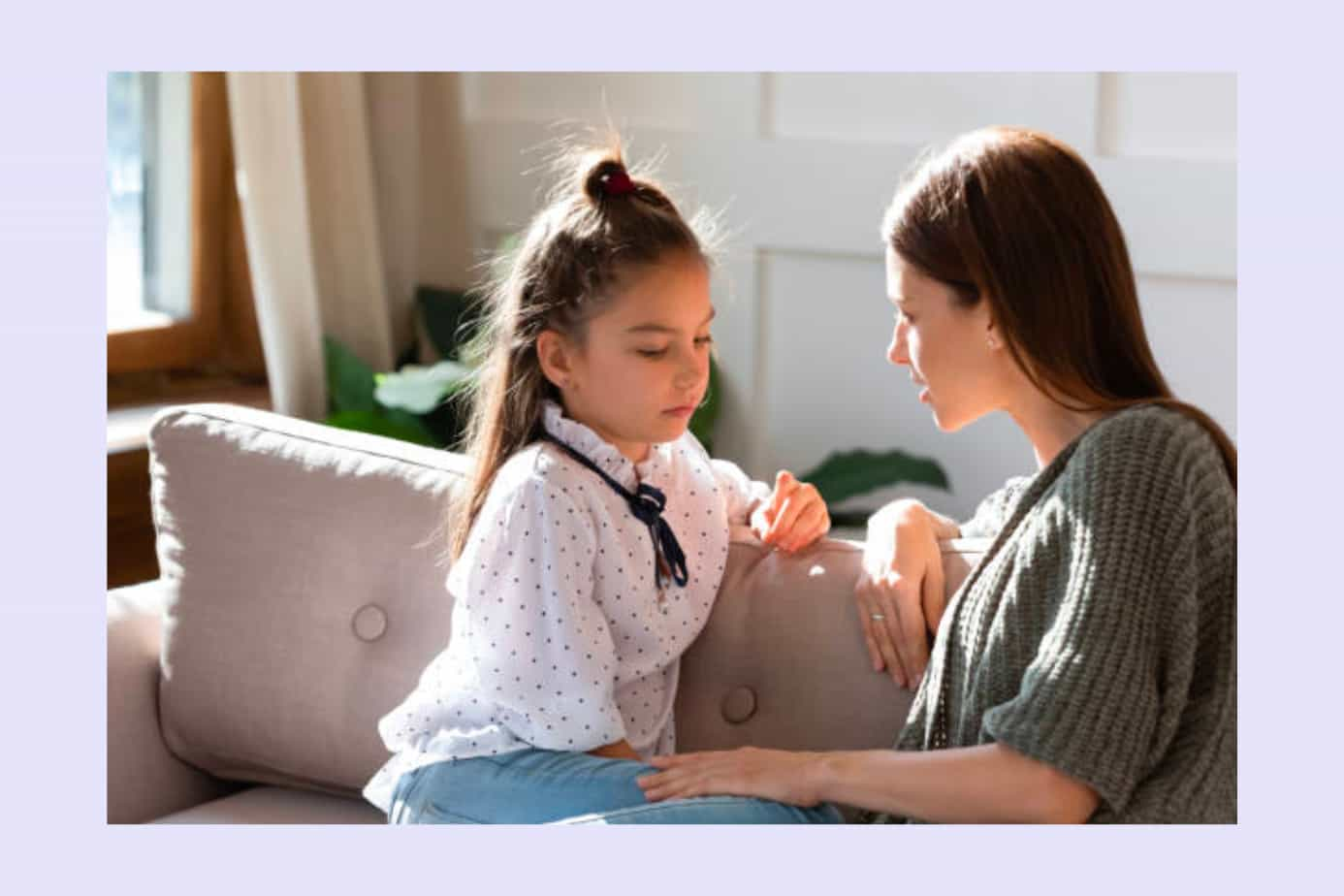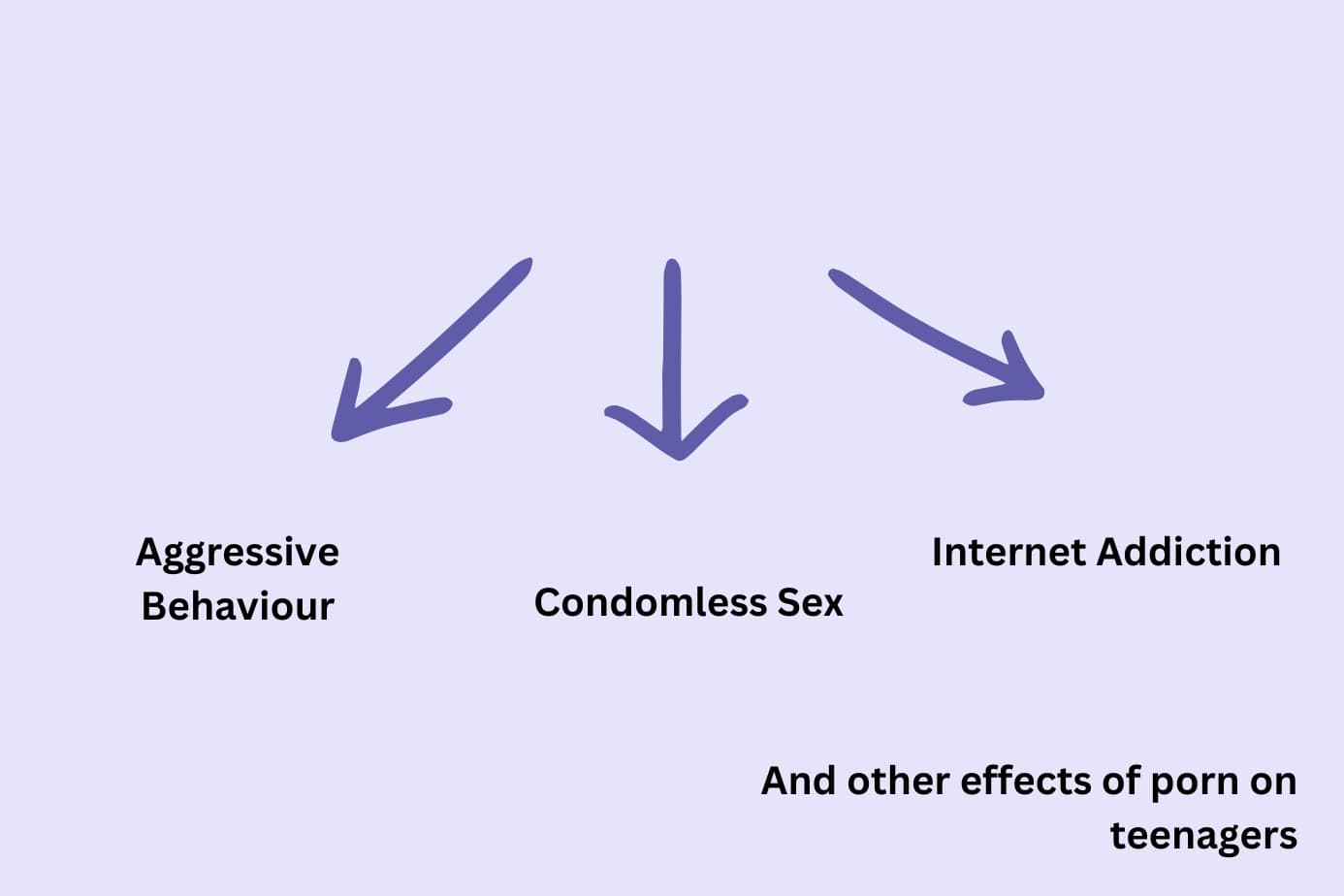It’s a moment you hoped would never happen.
But as terrifying as it is to discover your daughter is sending inappropriate pictures, there are steps you can take to minimize damage and prevent it from happening in the future.
At a glance, here’s what you can do:
- Talk to your daughter with compassion and understanding
- Ensure the photos are removed from all devices and online platforms
- Consider whether to inform the school or police
- Understand the legal aspects of minors sending explicit photos
- Protect your child by using Canopy’s Parental Control App
In this article, we’re going to explore these steps further and provide practical advice you can implement right away.
6 Things to Do if Your Daughter Is Sending Inappropriate Pictures
1. Talk to Your Daughter
Talking about it with your daughter might feel uncomfortable but it’s essential. This conversation will help you understand why it happened, who is in possession of the pictures, and how you can prevent it from happening again.
You should approach the conversation with compassion, empathy, and honesty.
Here are some tips to get you started:
- Avoid shaming her
- Understand why she sent the photo(s)
- Explain any potential legal consequences of sending the photo(s)
- Talk about sex (because if she’s sexting, it’s well past time to have the ‘talk’)
Avoid shaming your daughter
On one Reddit thread, a parent shared concerns over their child sending inappropriate pictures. Fellow parents were quick to provide their advice.
One responded:

And that Redditer is right. Shaming your daughter’s behavior can be unproductive and damaging. It may even cause her to withhold things from you in the future for fear of being shamed again.
Beyond that, primary care pediatrician, Clair McCarthy, MD believes shaming a child is unlikely to result in behavioral change and can negatively impact self-esteem.
By being supportive and understanding, your daughter is more likely to share the truth and be receptive to your advice.

Ask why she sent nude pictures
Understanding the reasons behind your daughter sending the photo can help you address the underlying issues.
Was she asked to send the photos? Did she want to? Was she pressured into it?
These are all things you’ll want to have answers to. Her answers will shape the actions you take later and how you’ll work together to move forward so that it doesn’t happen again.
To get to the bottom of it, ask open ended questions, listen without judgment, and have follow up questions that dig deeper into the situation and how she felt.

It’s reported that 1 in 4 teens receive sexually explicit texts and emails while 1 in 7 are sending them. So, your daughter isn’t alone in her actions but that doesn’t make them any less serious. This brings us to our next point.
Explain How Serious the Situation Is
Sextortion, revenge porn (up 40% in 2022 from 2021), a teen showing off to their friends.
Those are just some reasons a nude photo gets sent around.
And once it’s out there, especially if it winds up on the internet, there’s no telling what impact it will have on a child’s reputation and future. Or if sexual predators will get hold of it.
That’s why you need to clearly explain to your daughter how serious her actions were and how damaging the actions of others who have her photo can be. Include her in the conversation by having her tell you what consequences might occur. Then cover anything she’s missed.
It’s best to use real-life examples rather than generalizations to communicate the severity so that it sinks in. It’s easy to have the mindset of ‘yes, but that won’t happen to me.’ That mindset is dangerous and could lead to a repeat of the issue.
Related read: 9+ Sextortion Examples and Scams to Avoid

Discuss the legal consequences
Many teens don’t realize that sending explicit images can have serious legal repercussions.
Be clear that having and distributing child pornography is a crime, even if the photo is of herself.
More than 1 in 10 teens are forwarding sexts without consent. So there could be legal consequences for others too and unintended exposure for your daughter.
Make sure she understands that she, the person she sent the photo to, and anyone that they sent the photo to are officially in possession of child pornography and can be convicted in certain states.
For more information, scroll down to the section: Consider This: Is a Minor Sending Nudes a Crime?

Have “the talk” with her (if you haven’t already)
If you haven’t already, it’s time to have an open conversation about sex, relationships, and the responsibilities that come with them.
Be honest and age-appropriate, and encourage your daughter to ask questions. Discuss how the prevalence of sexting has increased in recent years and how it affects youth as they age. It’s a good time to cover the effects of porn on teenagers too.
Help her understand the difference between healthy exploration and risky behavior.
You can also introduce the idea of a parent text monitoring app like Canopy, which will help you keep her safe from the dangers of sexting without sacrificing her privacy.

Remember, communication is key when addressing sensitive issues like sexting. By approaching the conversation with understanding, empathy, and support, you can help your daughter make better choices in the future.
Take it from fellow parents. One Redditor shared:

And with Canopy’s Parental Control App, you’ll have an extra layer of protection to keep her safe in the digital world.
→ Prevent your child from sexting while still respecting their privacy. Download Canopy here. ←
2. Ensure the Photos Are Removed
Your daughter is underage and any inappropriate photos she’s sent need to be removed as soon as possible. This will prevent them from circulating further.
A research report put out by the University of New Hampshire states that a photo doesn’t need to contain nudity to be considered child pornography. So be sure to remove any photo in a bathing suit or underwear that focuses on genitals.
Here are some practical steps to help you minimize the damage and prevent further dissemination.
Delete the pictures from your daughter’s devices
The easiest place to begin is with your daughter’s phone, computer, tablet, and other devices the photo might be stored.
Ask her where the photos could be stored and have her delete them. Be sure she gets them all but try to avoid seeing the photos yourself. This can save you both further embarrassment.
Think about cloud databases that might have it and make sure it’s also deleted from her ‘Recently Deleted’ album.

Delete the pictures from anyone else’s devices
Next, try to identify who else may have received the explicit photos and if they sent them to anyone else.
Encourage your daughter to communicate with the recipients, asking them to delete the images and explaining the legal ramifications of not doing so.
It might be an uncomfortable conversation, but it’s necessary to protect her well-being.
If the recipients of the photos are unwilling to cooperate, you may need to involve their parents. Sometimes adults have to step in to help where bullying and peer pressure take place.
Go into that conversation without anger and explain you’re looking to protect their child too.
If your daughter has sent photos to an adult, you should get the police involved immediately. There’s a section further down to help you navigate that step.
Find how far the pictures have spread and remove them
Sometimes the sending of an inappropriate picture snowballs out of control.
Zara McDermott, a UK influencer and documentary presenter, was 14 when she was pressured into sending a naked photo of herself. It was then circulated in and beyond her school group. This caused an onslaught of unfair treatment from her community and led to her having suicidal thoughts.
It’s a situation no one wants their daughter to face.
That’s why understanding how far the photo has gone, and doing everything you can to remove it is so important.
It’s not just phones and computers that are the problem either. If the photo is uploaded to the internet you will need to take swift action.
Search for the images online, and if you find them on websites or social media platforms, report them to the site administrators to have them removed. Make sure to inform the site that the photo is child pornography so that they take it seriously. If they refuse, you may need to get the police involved.
→ Protect your child from sending and receiving nudes. Block sexting with Canopy. ←
3. Consider This: Should You Inform the School?
You should only involve the school if you have to.
If the photo has been widespread the school may be able to help round up those who have the photo and bring it to the attention of their parents so that the photo is deleted.
However, if you know who has the photo and you’re able to have it deleted then it’s better to keep your daughter’s school out of the loop.
In Zara’s case, she was expelled from school while the boy who pressured her went unpunished. While unfair and unjust, you cannot predict if the school will handle the situation appropriately or if they’ll punish your daughter.
Before making a decision, it’s a good idea to learn about the school’s policies on sexting. Chat with a school counselor or someone in charge. They can tell you what the school usually does and from there you can decide what’s right for your daughter.
Make sure this never happens again by getting Canopy, the best parental control app for sexting prevention.
4. Consider This: Should the Police Get Involved?
If the situation escalates and your daughter is being harassed or blackmailed due to the pictures, it’s time to consider contacting law enforcement.
And if you suspect or know an adult pressured her into sending inappropriate photos you should involve the police immediately. This person could be pressuring other children to do similar.
Here’s an example of an adult soliciting nude pictures from an underage girl, as documented by the University of New Hampshire report referenced earlier:
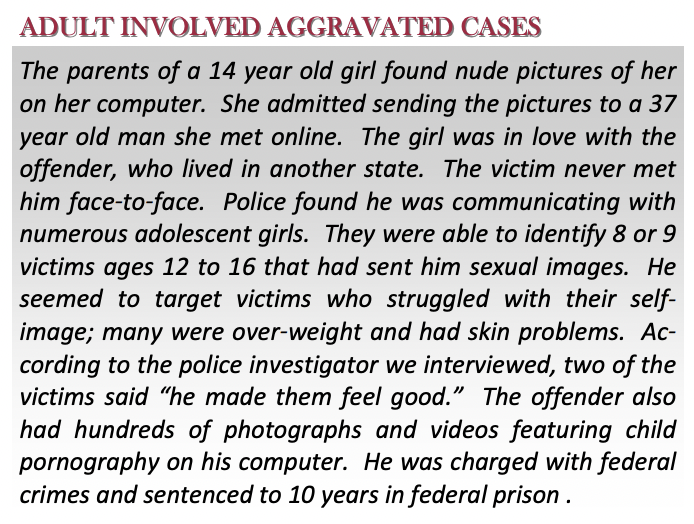
Always prioritize your daughter’s well-being and safety. If the situation warrants it, don’t hesitate to reach out to the police for help and guidance.
5. Consider This: Is a Minor Sending Nudes a Crime?
The American Academy of Pediatrics reports teen sexting can be prosecuted under state or federal law. But it varies state by state whether this actually occurs.
Legal consequences can be overwhelming for the teenagers and their families, with costly and life-changing implications.
Take, for instance, the 2014 case of a Minnesota girl who faced felony distribution of child pornography charges for sending a revealing selfie via Snapchat. The recipient, a boy from her school, took a screenshot and shared it without her consent. If convicted, the girl could have spent up to 10 years in prison and been required to register as a sex offender for life. Thankfully, a judge dismissed the charges in 2018.
But other states have convicted teenagers for sexting. In 2019, Maryland found a 16-year-old guilty of child pornography when she filmed herself engaged in sexual conduct and sent the video to her friends.
Be sure to check the laws for your specific state. As parents, it’s our responsibility to educate our children about the legal and emotional risks involved in sending explicit photos.
If you want to prevent your daughter from committing a crime, block sexting altogether with Canopy.
6. Prevent Your Daughter From Sending Inappropriate Pictures in the Future
Dealing with inappropriate photos can be overwhelming and emotionally draining for both you and your daughter.
That’s why it’s essential to have a plan in place to prevent it from happening again. Canopy’s Parental Control App offers an extra layer of protection to help keep your child safe from sexting in the digital world.
It blocks explicit content and monitors your child’s online activity, giving you the peace of mind you need.
Don’t wait for another incident to occur. Take control of your child’s digital safety today and block sexting with Canopy.

